In this episode of the NOW! Bali Podcast we help to unpack the complex subak irrigation system found in Bali. This system is far more than just an agricultural feature, it is a socio-cultural organisation that not only helps to ensure fertility of Bali’s rice fields but creates a connection between God, people and nature.
The subak in Bali is ubiquitous but rarely understood. It has been made well-known through the Jatiluwih Rice Terraces, a 600-hectare area of rice fields listed in the UNESCO World Heritage Sites as ‘cultural landscape’ where the subak system is considered a ‘manifestation of the Tri Hita Karana Philosophy’.
So how exactly does the subak, a water-sharing or irrigation system, represent this philosophy of well-being (Tri Hita Karana), i.e. the relationship between God, Nature and People? This is what we unpack in this episode of the NOW! Bali Podcast. (Transcript available below).
Listen to Episode 18
Available on your preferred Podcast Platform:
iTunes • Spotify • Google Podcasts • Pocket Casts • Radio Public
Structure of Discussion
• Introduction
• Origins of the Subak
• Physical Structure of the Subak
• Social Organisation
• Religious Rites
• Conclusion: The Future of the Subak
Explaining Bali’s Subak System
Introduction
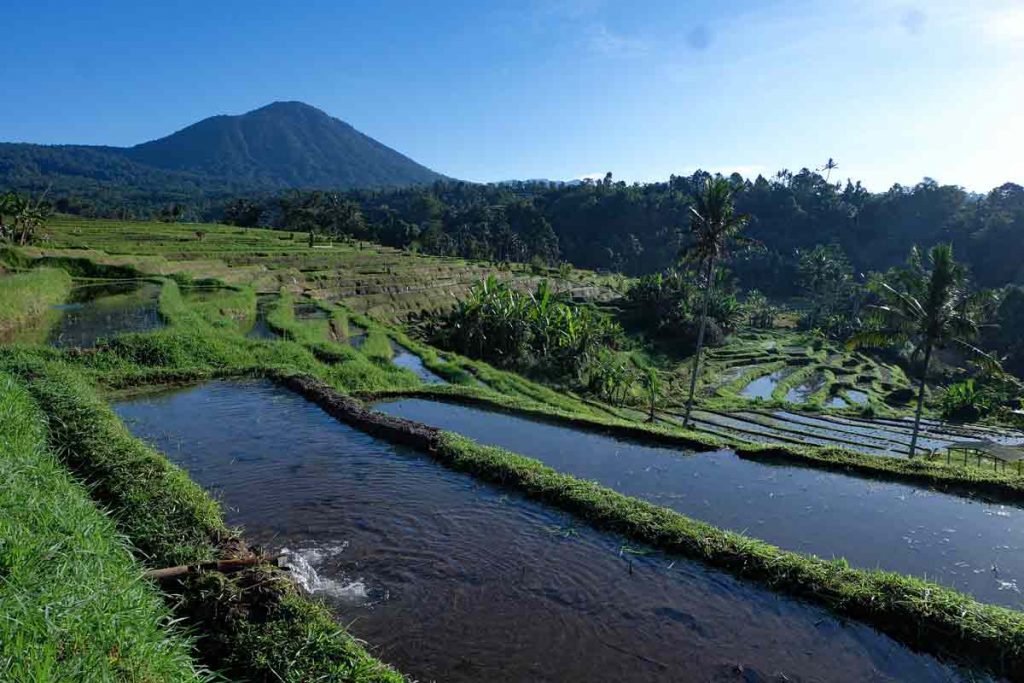
Bali is synonymous with rice fields. Vast landscapes sculpted by bare hands and pitchforks, following the contours of the land, from deep terraced valleys to the flat, plotted pools that dot the roadsides.
To visitors, they are an aesthetic accoutrement, part of the decoration that solidifies Bali’s paradisal reputation. A simple vista, or the stage upon which the local farmers perform.
In truth, these fields of green and gold are part of something greater. Not only do they produce the most important sustenance in Indonesia, rice, these paddy fields are the physical representation of a Balinese Hindu philosophy.
This is precisely why Jatiluwih, the 600 hectares of rice fields in Tabanan, is included in the UNESCO World Heritage List. It is listed as a cultural landscape, what does that even mean? It refers to the subak water-sharing system and how the rice fields are the manifestation of the Balinese Tri Hita Karana Philosophy, the three elements of well being, God Nature and People, that must be in balance and in harmony with one-another.
So how exactly does the subak, a water-sharing or irrigation system, represent the relationship between God, Nature and People? That’s what we’re hoping to explain today.
Origins of Subak Bali
The exact origins of the subak system in Bali is still in question, but inscriptions date its existence on the island anywhere between the years 882 AD and 1072 AD — that’s a thousand years the subak has been part of the Balinese agrarian society.
At the simplest level, the subak system aims to distribute water to all rice farmers in a given area, in a fair and democratic manner. For this to happen, two things must be accurately organised, the physical distribution of this water and also the social organisation for this system to run properly. Simultaneously, religious ceremonies and rituals are imbued into both the physical and social systems.
Physical Structure
Let’s begin with the physical structure of the Subak.
A subak is a group of paddy fields that obtains water from the same source. One subak will, on average, cover an area of 100ha, but subaks in Bali range anywhere from 4ha to 600ha. Normally, the boundaries of a subak are natural features, be it the watershed of a catchment area, creeks, valleys or rivers. There are even different categories for subaks depending on their size and also where they are located along a major river (i.e. upstream, downstream etc).
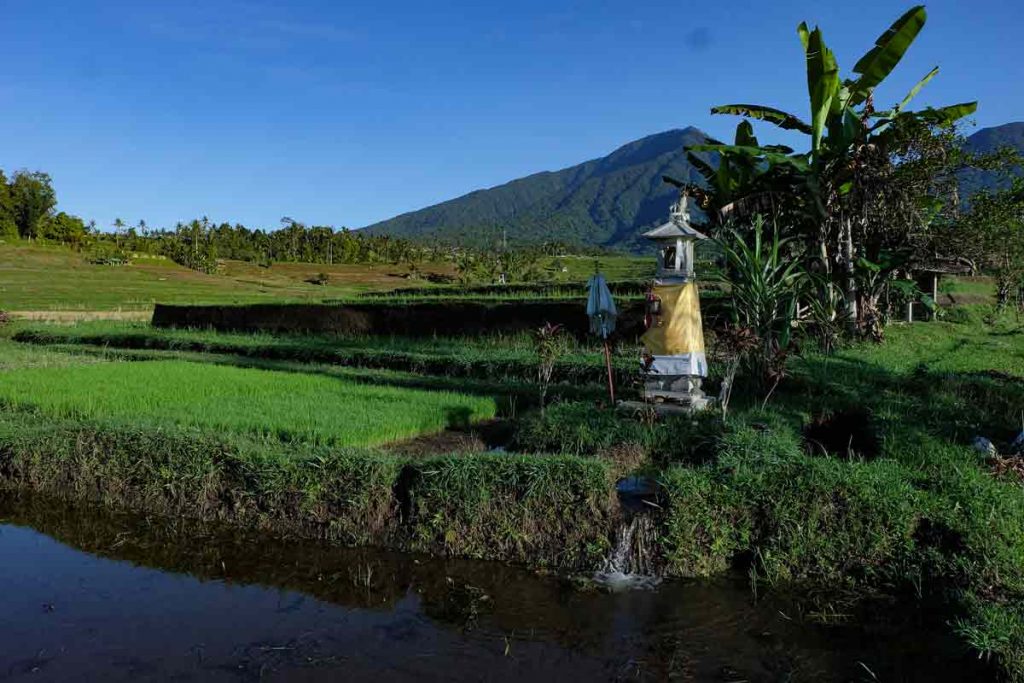
But what’s most important is the internal structure of each individual subak, as well as the journey which water takes through this physical system.
Starting from the main source of water, normally a river, a weir or dam is built to divert water into a canal constructed by the farmers themselves; these canals might be diverted several times before finally spilling into a specific rice field plot.
Each farmer might have several plots and so within their section of the subak, their plots will be connected by ingenious little aqueducts, bamboo pipes or underground tunnels that run across ditches and under roads. At certain scheduled times, one farmer will then spill his water into another farmer’s section, and this continues until all have had their fair share of water.
The last farmer in the rotation will then return the water back into the main source of water, down river.
Now this really quite an engineering feat. Imagine these vast areas with vine-like networks sharing water through ditches and embankments at agreed-upon times, using simple tools to divert, block or build up water through the system. Now throughout this network, from top to bottom, there are also specific temples that are placed at certain spots where the area is diverted, which we’ll talk about in detail later.
The Social Organisation
What comes hand-in-hand with this complex physical structure of a subak, is that it requires a lot of management . This is done by the subak organisation, a democratic structure of people each assigned to different responsibilities.
Now the members of the subak organisation all have different levels of interaction; there are those who work directly on the farm, referred to as the seka; those that fund farming activities, called the pengampel; and a group who are involved in periphery work called leluputan, such as temple priests.
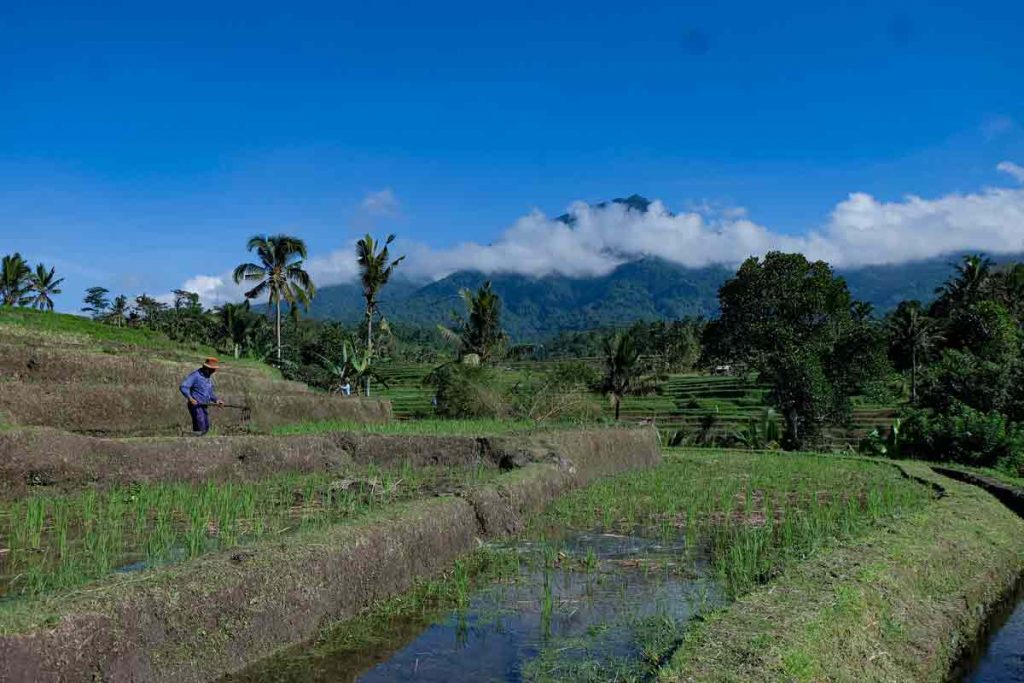
Interestingly, each subak has its own laws. These are called awig-awig, and are either scribed into lontar manuscripts or passed down as an oral tradition. Each subak organisation has the autonomy to create their own awig-awig, pertaining to farming duties, crop scheduling, water rotations, collective group work, how they settle conflict or discipline members and of course religious duties.
Even within the seka — i.e. the group directly involved in working on the farms — there are different categorisations. This is because a rice field has different needs depending on the time of the season. You have the seka tandur who transplant rice, the seka manyi who harvest the rice; the seka sambang who supervise the water usage and so on. The level of mutual work and cooperation, this Indonesian concept of ‘gotong royong’, is taken to new levels in the rice fields. There is also a very defined hierarchy within a subak organisation, which involves the subak head, treasurers, group leaders.
Religious Ceremonies of the Subak System
An integral component of the subak organisation is the religious ceremonies that must be performed by farmers and members. This alone is complex, with different rituals required for different times in the harvest, but also taking place at different temples.
For the Balinese Hindu, there are some principle deities that must be addressed to ensure a fertile harvest. These include Dewi Sri, the goddess of rice, Dewi Danu, the goddess of the lake (as lakes are the source of most irrigation water), the god Wisnu, as water is said to symbolise him, just to name a few. Prayers and offerings are done to ask for blessing as well as to placate potential destruction.
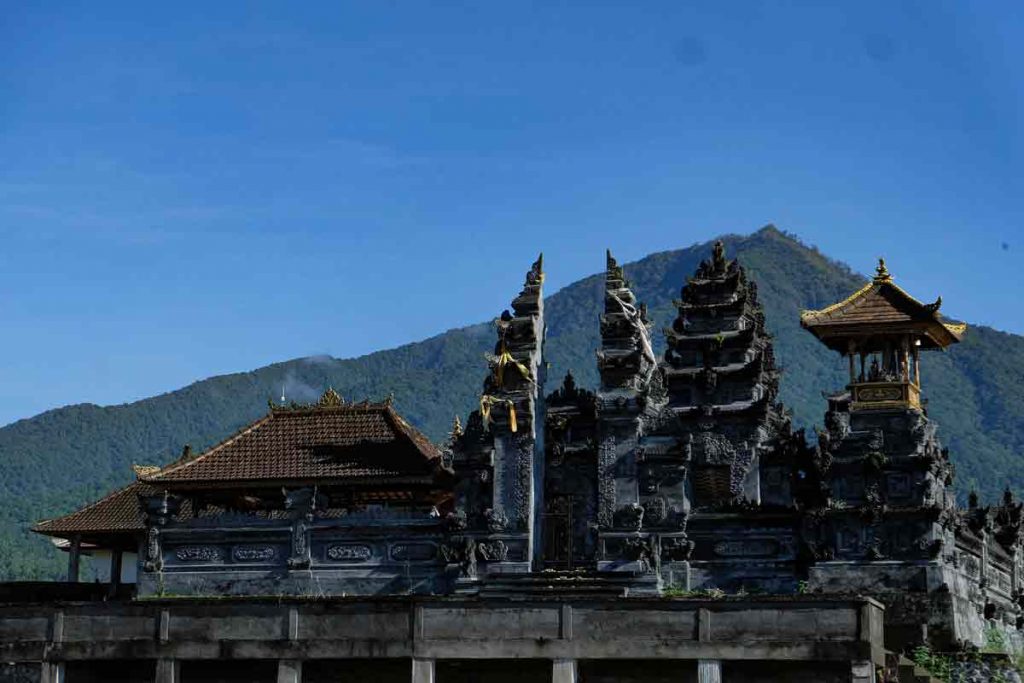
There are sixteen different rituals that must be conducted by each subak organisation, all for different reasons. At the start of the planting season, when the water is first distributed into the farmers canals, a mapag toya ritual is conducted as a group… then you have other group ceremonies like the pecaruan ceremony, done to prevent disease of the crops, or the ngusaha ceremony, done 10 days before harvest, as a thank you to the creator for His blessings.
Then there are other rituals done by certain members of the subak, like the pangwiwit ceremony done by the local priests before seed-beds are prepared. Or other minor rituals are done by the farmers individually for their own plots.
To make matters even more complicated, there are mantras which should be chanted to a specific deity, in hopes for a specific result, be it keeping pests away or asking for good fertility, and so on.
You will notice too that in and around rice fields there are often different types of shrines and temples. There is actually a hierarchy of temples, which follow the basic rule that the more upstream a temple is, the more important it is.
At the farm-level you will find the simple sanggah catu shrines (often made of bamboo, placed where water enters an individual plot), you’ll have a more permanent shrine called the Pura Bedugul, placed where water is diverted at the start of the subak area, then you will find a Pura Ulun Swi, found at the original dam, when water was first diverted out of the main water source.
Then the furthest up the hierarchy are the lake temples, the Pura Ulun Danu, found at Beratan, Batur, Buyan and Tamblingan lakes. The different members of the subak perform rituals at the different temples, though all will have to pay at least an annual visit to one of the big lake temples.
Conclusion: The Future of the Subak
So, even with this rather simple explanation of the subak system, we can see how the Tri Hita Karana philosophy plays out.
The relationship between people must be democratic and fair, because the whole system requires that everyone plays their part. There’s no room for conflict, or greed, or selfishness. This is about mutual growth.
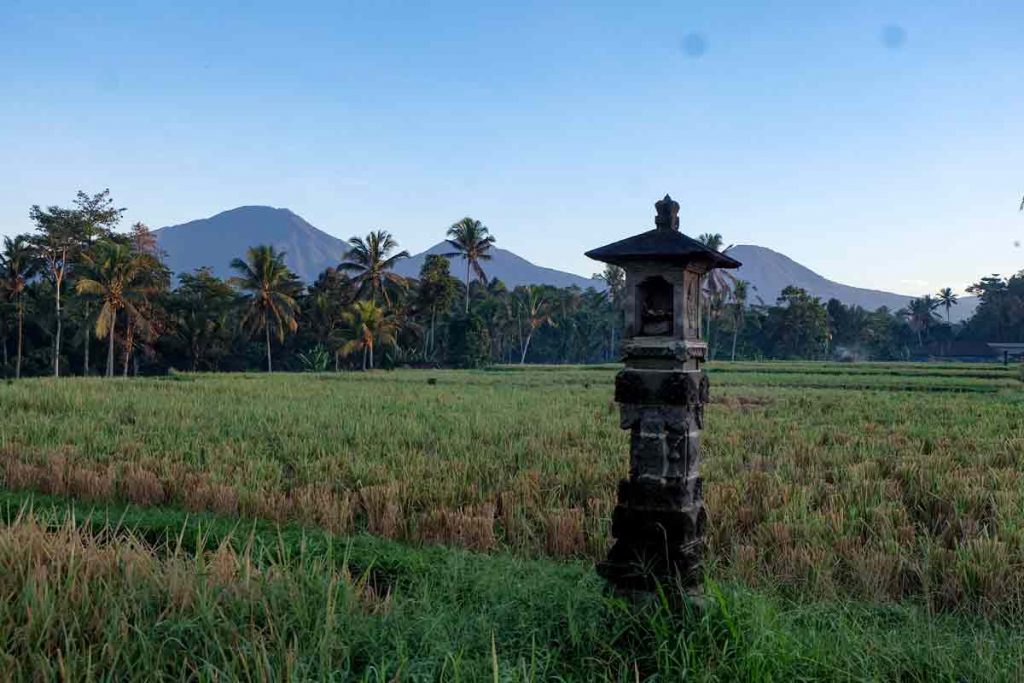
The relationship between people and nature is evident, with water being shared and then returned, the land cared for and watched over constantly.
Finally, the relationship between people and God, or the godly, is seen through every step of the rice’s growth, and at every important physical point of the subak network. Rituals and temples are part and parcel with the water’s journey through the fields and canals.
The rice fields of Bali and the subak system needed to maintain them, are physical reminders of these three important relationships, God, People and Nature.
Yet, despite the importance, at the end of the day this cultural system is tied closely to Bali’s agrarian way of life, which is at a turning point.
The changing land-use of Bali, as rice fields vanish and are turned into villas and shop houses, threatens the presence of the subak system, as well as the many temples and ceremonies that exist exclusively for the harvesting of rice. The farmers too, may not see a future in their farms, as new generations find better paying work off the fields — and why should they not have that right?
The land, the people and the gods are thus interconnected in Bali, when one changes, the rest follow. How much change can Bali withstand before its continuous efforts to retain balance gets tipped too far in the wrong direction?
The only way to truly preserve the subak system is to ensure a lucrative future for the rice farmers… to fairly compensate them for what they really are, beyond just the value of their harvest. Because they are not only the producers of rice, they are the architects of the island’s landscape, and they are the protectors of Bali’s cultural heritage.







